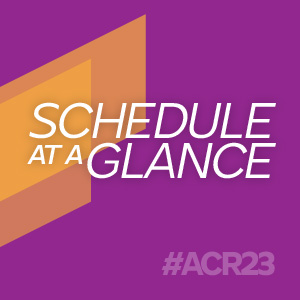Poster Session C
Systemic lupus erythematosus (SLE)
Session: (2257–2325) SLE – Diagnosis, Manifestations, & Outcomes Poster III
2262: Identifying Important Domains for Inclusion in a Novel Treatment Response Measure for Systemic Lupus Erythematosus (TRM-SLE): Results of a Modified Delphi Study
Tuesday, November 14, 2023
9:00 AM - 11:00 AM PT
Location: Poster Hall
.png)
Eric Morand, MD, PhD
Monash University
Clayton, Victoria, AustraliaDisclosure information not submitted.
Abstract Poster Presenter(s)
Kathryn Connelly1, Rachel Koelmeyer1, Darshini Ayton1, Raychel Barrallon1, Laura Eades2, Vera Golder3, Kate gregory1, John May1, Rangi Kandane-Rathnayake3, Maisarah Mydin1, Munni Akther1, Afia Anzum1, Jeanette Andersen4, Hermine Brunner5, Cynthia Aranow6, Laurent Arnaud7, Anca Askanase8, Catherine Barbey9, Joy Buie10, Laurie Burke11, Alain Cornet12, Karen Costenbader13, Maria Dall'Era14, Joan Merrill15, Khadija Dantata16, Alan Friedman17, Richard Furie18, Sandra Garces19, Maja Hojnik20, Kenneth Kalunian21, Justine Maller22, Patrick Marquis23, Marta Mosca24, Erika Noss25, Guillermo Pons-Estel26, Lee Simon27, Eve Smith28, Alessandro Sorrentino29, Anna Stevens30, George Stojan31, Ying Sun32, Yoshiya Tanaka33, Ed Vital34, Ronald van Vollenhoven35, Victoria P. Werth36 and Eric Morand37, 1Monash University, Clayton, Australia, 2Monash Health and Monash University, Clayton, Australia, 3Monash University, Department of Medicine, Sub-faculty of Clinical and Molecular Medicine, Clayton, Australia, 4Lupus Europe, Knebel, Denmark, 5Cincinnati Children's Hospital Medical Center, Division of Rheumatology, Cincinnati, OH, 6Feinstein Institutes for Medical Research, Manhasset, NY, 7University Hospitals of Strasbourg, Strasbourg, France, 8Columbia University Medical Center, New York, NY, 9Biogen, Baar, Switzerland, 10Lupus Foundation of America, York, SC, 11LORA Group, Normal, IL, 12Lupus Europe, Brussels, Belgium, 13Brigham and Women's Hospital and Harvard Medical School, Boston, MA, 14University of California San Francisco, San Francisco, CA, 15Oklahoma Medical Research Foundation, Oklahoma City, OK, 16Lupus Foundation of America, Richmond Hill, GA, 17AbbVie, Inc., North Chicago, IL, 18Northwell Health, Manhasset, NY, 19Amgen, Inc., Thousand Oaks, CA, 20Eli Lilly and Company, Indianapolis, IN, 21University of California San Diego, La Jolla, CA, 22Genentech, Inc., Half Moon Bay, CA, 23Modus Outcomes, Newton, MA, 24Rheumatology Unit, Department of Clinical and Experimental Medicine, University of Pisa, Pisa, Italy, 25Janssen Research and Development, Dresher, PA, 26CREAR, Rosario, Argentina, 27SDG LLC, West Newton, MA, 28University of Liverpool, Liverpool, United Kingdom, 29Medical Affairs, AstraZeneca, Cambridge, United Kingdom, 30Bristol Myers Squibb, Groton, CT, 31UCB, Baltimore, MD, 32the healthcare business of Merck KGaA, Darmstadt, Germany, 33University of Occupational and Environmental Health, Kitakyushu, Japan, 34University of Leeds, Leeds, United Kingdom, 35Amsterdam University Medical Centers, Amsterdam, Netherlands, 36University of Pennsylvania, Wynnewood, PA, 37Monash University, Centre for Inflammatory Diseases, Melbourne, Australia
Background/Purpose: The Treatment Response Measure for Systemic Lupus Erythematosus (TRM-SLE) is a novel clinical outcome assessment (COA) for SLE randomized controlled trials (RCTs), being developed by an international clinician-industry-patient taskforce. Current COA development guidelines require that outcome measures used in RCTs should capture treatment effects relevant to how patients "feel, function or survive" to support regulatory approval (1). The aim of this study was to identify domains to be considered for inclusion in TRM-SLE from the perspective of expert SLE clinicians and patients based on this paradigm.
Methods: Candidate domains were identified via surveying a multinational panel of clinicians, patients and industry representatives. Domains were then rated in a modified Delphi study (two online survey rounds separated by a discussion meeting) in which clinicians with SLE expertise and patient advisory panellists were invited to rate the "importance" of candidate domains on a 1-9 scale (where 1 = not important and 9 = critically important). Importance was defined as domain activity having an impact on how a patient "feels, functions or survives", when assessing response to treatment in an SLE RCT. A literature review summarising associations of each candidate domain with key SLE symptoms, functional impact, damage and mortality was provided to participants to support participant ratings. The consensus threshold was prespecified as a rating of at least 7 by 70% of participants in both clinician and patient groups.
Results: The domain generation survey yielded 64 nominations, grouped into a core list of 34 candidate domains. Of 118 invitees to the modified Delphi study, 87 clinicians with a median (interquartile range; IQR) of 21 (11, 30) years' experience and 13 patients/representatives with a median (IQR) disease duration of 19 (16,33) years participated, with representation from six continents. Of the 34 candidate domains, 6 met the consensus threshold after Round 1 of voting, increasing to 14 after Round 2 (Table 1). An additional 11 domains met consensus in the patient group only. Notably, some domains meeting consensus on importance (e.g. fatigue) are not measured in current primary SLE trial endpoints, while others (e.g. anti-dsDNA, complement) included in current response measures did not reach consensus for inclusion.
Conclusion: When rated for importance, consensus was reached in both SLE clinician and patient groups on multiple candidate domains for inclusion in a novel COA for SLE trials. Discrepancies between clinician and patient perspectives were also identified. Important domains will next be rated on other characteristics relevant to inclusion in a COA (appropriateness, representation and measurability), with selected domains to proceed to definition of response measurement.
References:
1. FDA Patient Focused Drug Development Guidance: Selecting, Developing or Modifying Fit-for-Purpose Clinical Outcome Assessments. https://www.fda.gov/media/159500/download
.jpg)
K. Connelly: AstraZeneca, 2; R. Koelmeyer: None; D. Ayton: None; R. Barrallon: None; L. Eades: None; V. Golder: None; K. gregory: None; J. May: None; R. Kandane-Rathnayake: None; M. Mydin: None; M. Akther: None; A. Anzum: None; J. Andersen: None; H. Brunner: AbbVie, 2, AstraZeneca-Medimmune, 2, Biogen, 2, Boehringer-Ingelheim, 2, Bristol-Myers Squibb (BMS), 2, 5, Celgene, 2, Eli Lilly, 2, 5, EMD Serono, 2, F-Hoffman La Roche, 2, 5, GlaxoSmithKlein (GSK), 2, 5, 6, Horizon, 2, 2, Janssen, 5, Merck, 2, Novartis, 2, 5, 6, Pfizer, 2, 5, 6; C. Aranow: AstraZeneca, 2, Bristol-Myers Squibb(BMS), 2, GlaxoSmithKlein(GSK), 2, 5, kezar Inc, 2; L. Arnaud: AbbVie, 6, Alexion, 6, Alpine, 2, 6, Amgen, 6, AstraZeneca, 1, 2, 6, Biogen, 6, Boehringer Ingelheim, 6, Bristol-Myers Squibb(BMS), 2, 6, Eli Lilly, 6, GlaxoSmithKlein(GSK), 1, 2, 6, Grifols, 6, Janssen, 6, Kezar Life Sciences, 2, 6, LFB, 6, Medac, 6, Novartis, 2, 6, Pfizer, 6, Roche-Chugaï, 6, UCB, 6; A. Askanase: AbbVie, 2, Amgen, 2, AstraZeneca, 2, Aurinia, 2, Bristol-Myers Squibb, 2, Celgene, 2, Eli Lilly, 2, Genentech, 2, GSK, 2, Idorsia, 2, Janssen, 2, Mallinckrodt, 2, Pfizer, 2, UCB Pharma, 2; C. Barbey: Biogen, 3, 11; J. Buie: None; L. Burke: Amgen, 1, Biogen, 1; A. Cornet: None; K. Costenbader: Amgen, 2, 5, AstraZeneca, 5, Bristol-Myers Squibb(BMS), 2, Cabaletta, 2, Eli Lilly, 2, Exagen Diagnostics, 5, Gilead, 5, GlaxoSmithKlein(GSK), 2, 5, Janssen, 2, 5; M. Dall'Era: Annexon Biosciences, 2, 5, AstraZeneca, 2, Aurinia, 2, Biogen, 2, GlaxoSmithKlein, 2, 5, Pfizer, 2; J. Merrill: AbbVie, 2, Alexion, 2, Alumis, 2, Amgen, 2, AstraZeneca, 2, 5, Aurinia, 2, Bristol Myers Squibb, 2, 5, EMD Serono, 2, Genentech, 2, Gilead, 2, GlaxoSmithKline, 2, 5, Lilly, 2, Merck, 2, Pfizer, 2, Provention, 2, Remegen, 2, Sanofi, 2, UCB Pharma, 2, Zenas, 2; K. Dantata: None; A. Friedman: AbbVie, 3, 11; R. Furie: Biogen, 2, 5; S. Garces: Amgen, 3, 11; M. Hojnik: None; K. Kalunian: AbbVie/Abbott, 2, Amgen, 5, AstraZeneca, 2, Aurinia, 2, Bristol-Myers Squibb(BMS), 2, Eli Lilly, 2, EquilliumBio, 2, Genentech, 2, Gilead, 2, Janssen, 2, KezarBio, 1, Merck/MSD, 2, Novartis, 2, Pfizer, 2, Remegene, 2, Roche, 2, UCB, 5; J. Maller: Genentech, 3; P. Marquis: Alexion, 2, Biogen, 2, Eli Lilly, 2, GlaxoSmithKlein(GSK), 2, Mitsubishi Tanabe Pharma, 2, Otsuka, 2, Takeda, 2, UCB, 2; M. Mosca: AstraZeneca, 2, Bristol-Myers Squibb(BMS), 2, Eli Lilly, 2, GlaxoSmithKlein(GSK), 2, Otsuka, 2, UCB, 2; E. Noss: Janssen, 3; G. Pons-Estel: GlaxoSmithKlein(GSK), 1, 5, 6, Janssen, 1, 5, 6, Novartis, 1, 6, Pfizer, 5, 6, Werfen/Inova, 5, 6; L. Simon: Horizon, 2, 7, Pfizer, 2, 12, Member of DSMB; E. Smith: None; A. Sorrentino: AbbVie/Abbott, 12, Own stocks, AstraZeneca, 3, Galapagos, 12, Own stocks, Gilead, 12, Own stocks, Moderna, 12, Own stocks; A. Stevens: Bristol-Myers Squibb(BMS), 3, 11; G. Stojan: UCB Pharma, 3, 11; Y. Sun: The healthcare business of Merck KGaA, Darmstadt, Germany, 3; Y. Tanaka: AbbVie, 6, AstraZeneca, 6, BMS, 6, Boehringer-Ingelheim, 6, Chugai, 5, 6, Eisai, 5, 6, Eli Lilly, 6, Gilead, 6, GSK, 6, Mitsubishi-Tanabe, 5, Pfizer, 6, Taiho, 6, Taisho, 5, 6; E. Vital: F. Hoffmann-La Roche Ltd, 2, Genentech, Inc., 2, Sandoz, 5; R. van Vollenhoven: AbbVie, 2, 6, AstraZeneca, 2, 5, 6, Biogen, 6, Bristol-Myers Squibb(BMS), 2, 5, 6, Galapagos, 2, 5, 6, GlaxoSmithKline, 6, Janssen, 2, 6, MSD/Merck Sharp and Dohme, 5, Novartis, 5, Pfizer, 2, 5, 6, RemeGen, 2, Roche, 5, Sanofi, 5, UCB, 2, 5, 6; V. Werth: AbbVie, 2, Amgen, 2, 5, Anaptysbio, 2, Argenx, 5, AstraZeneca, 2, Biogen, 2, 5, Bristol Myers Squibb, 2, Celgene, 2, 5, Corbus, 5, CSL Behring, 2, 5, EMD Serono, 2, Galderma, 2, Genentech, 5, Gilead, 2, 5, GlaxoSmithKline, 2, Horizon Therapeutics, 5, Idera, 2, Incyte, 2, Janssen, 2, Kyowa Kirin, 2, Lilly, 2, MedImmune, 2, Medscape, 2, Merck, 2, Nektar, 2, Novartis, 2, Octapharma, 2, Pfizer, 2, 5, Principia, 2, Regeneron, 5, Resolve, 2, 2, Rome Therapeutics, 2, 5, Sanofi, 2, Ventus, 5, Viela, 2, 5, Xencor, 2; E. Morand: AbbVie, 2, 5, Amgen, 5, AstraZeneca, 2, 5, 6, Biogen, 2, 5, Bristol Myers Squibb, 2, 5, Eli Lilly, 2, 5, EMD Serono, 2, 5, Galapagos, 2, Genentech, 2, 5, GlaxoSmithKline, 2, 5, IgM, 2, Janssen, 2, 5, Novartis, 2, Servier, 2, Takeda, 2, UCB, 5.
Background/Purpose: The Treatment Response Measure for Systemic Lupus Erythematosus (TRM-SLE) is a novel clinical outcome assessment (COA) for SLE randomized controlled trials (RCTs), being developed by an international clinician-industry-patient taskforce. Current COA development guidelines require that outcome measures used in RCTs should capture treatment effects relevant to how patients "feel, function or survive" to support regulatory approval (1). The aim of this study was to identify domains to be considered for inclusion in TRM-SLE from the perspective of expert SLE clinicians and patients based on this paradigm.
Methods: Candidate domains were identified via surveying a multinational panel of clinicians, patients and industry representatives. Domains were then rated in a modified Delphi study (two online survey rounds separated by a discussion meeting) in which clinicians with SLE expertise and patient advisory panellists were invited to rate the "importance" of candidate domains on a 1-9 scale (where 1 = not important and 9 = critically important). Importance was defined as domain activity having an impact on how a patient "feels, functions or survives", when assessing response to treatment in an SLE RCT. A literature review summarising associations of each candidate domain with key SLE symptoms, functional impact, damage and mortality was provided to participants to support participant ratings. The consensus threshold was prespecified as a rating of at least 7 by 70% of participants in both clinician and patient groups.
Results: The domain generation survey yielded 64 nominations, grouped into a core list of 34 candidate domains. Of 118 invitees to the modified Delphi study, 87 clinicians with a median (interquartile range; IQR) of 21 (11, 30) years' experience and 13 patients/representatives with a median (IQR) disease duration of 19 (16,33) years participated, with representation from six continents. Of the 34 candidate domains, 6 met the consensus threshold after Round 1 of voting, increasing to 14 after Round 2 (Table 1). An additional 11 domains met consensus in the patient group only. Notably, some domains meeting consensus on importance (e.g. fatigue) are not measured in current primary SLE trial endpoints, while others (e.g. anti-dsDNA, complement) included in current response measures did not reach consensus for inclusion.
Conclusion: When rated for importance, consensus was reached in both SLE clinician and patient groups on multiple candidate domains for inclusion in a novel COA for SLE trials. Discrepancies between clinician and patient perspectives were also identified. Important domains will next be rated on other characteristics relevant to inclusion in a COA (appropriateness, representation and measurability), with selected domains to proceed to definition of response measurement.
References:
1. FDA Patient Focused Drug Development Guidance: Selecting, Developing or Modifying Fit-for-Purpose Clinical Outcome Assessments. https://www.fda.gov/media/159500/download
.jpg)
Table 1: Results of clinician and patient ratings of candidate domain importance, defined as domain activity impact on how a patient “feels, functions or survives” when assessing response to treatment in an SLE RCT.
K. Connelly: AstraZeneca, 2; R. Koelmeyer: None; D. Ayton: None; R. Barrallon: None; L. Eades: None; V. Golder: None; K. gregory: None; J. May: None; R. Kandane-Rathnayake: None; M. Mydin: None; M. Akther: None; A. Anzum: None; J. Andersen: None; H. Brunner: AbbVie, 2, AstraZeneca-Medimmune, 2, Biogen, 2, Boehringer-Ingelheim, 2, Bristol-Myers Squibb (BMS), 2, 5, Celgene, 2, Eli Lilly, 2, 5, EMD Serono, 2, F-Hoffman La Roche, 2, 5, GlaxoSmithKlein (GSK), 2, 5, 6, Horizon, 2, 2, Janssen, 5, Merck, 2, Novartis, 2, 5, 6, Pfizer, 2, 5, 6; C. Aranow: AstraZeneca, 2, Bristol-Myers Squibb(BMS), 2, GlaxoSmithKlein(GSK), 2, 5, kezar Inc, 2; L. Arnaud: AbbVie, 6, Alexion, 6, Alpine, 2, 6, Amgen, 6, AstraZeneca, 1, 2, 6, Biogen, 6, Boehringer Ingelheim, 6, Bristol-Myers Squibb(BMS), 2, 6, Eli Lilly, 6, GlaxoSmithKlein(GSK), 1, 2, 6, Grifols, 6, Janssen, 6, Kezar Life Sciences, 2, 6, LFB, 6, Medac, 6, Novartis, 2, 6, Pfizer, 6, Roche-Chugaï, 6, UCB, 6; A. Askanase: AbbVie, 2, Amgen, 2, AstraZeneca, 2, Aurinia, 2, Bristol-Myers Squibb, 2, Celgene, 2, Eli Lilly, 2, Genentech, 2, GSK, 2, Idorsia, 2, Janssen, 2, Mallinckrodt, 2, Pfizer, 2, UCB Pharma, 2; C. Barbey: Biogen, 3, 11; J. Buie: None; L. Burke: Amgen, 1, Biogen, 1; A. Cornet: None; K. Costenbader: Amgen, 2, 5, AstraZeneca, 5, Bristol-Myers Squibb(BMS), 2, Cabaletta, 2, Eli Lilly, 2, Exagen Diagnostics, 5, Gilead, 5, GlaxoSmithKlein(GSK), 2, 5, Janssen, 2, 5; M. Dall'Era: Annexon Biosciences, 2, 5, AstraZeneca, 2, Aurinia, 2, Biogen, 2, GlaxoSmithKlein, 2, 5, Pfizer, 2; J. Merrill: AbbVie, 2, Alexion, 2, Alumis, 2, Amgen, 2, AstraZeneca, 2, 5, Aurinia, 2, Bristol Myers Squibb, 2, 5, EMD Serono, 2, Genentech, 2, Gilead, 2, GlaxoSmithKline, 2, 5, Lilly, 2, Merck, 2, Pfizer, 2, Provention, 2, Remegen, 2, Sanofi, 2, UCB Pharma, 2, Zenas, 2; K. Dantata: None; A. Friedman: AbbVie, 3, 11; R. Furie: Biogen, 2, 5; S. Garces: Amgen, 3, 11; M. Hojnik: None; K. Kalunian: AbbVie/Abbott, 2, Amgen, 5, AstraZeneca, 2, Aurinia, 2, Bristol-Myers Squibb(BMS), 2, Eli Lilly, 2, EquilliumBio, 2, Genentech, 2, Gilead, 2, Janssen, 2, KezarBio, 1, Merck/MSD, 2, Novartis, 2, Pfizer, 2, Remegene, 2, Roche, 2, UCB, 5; J. Maller: Genentech, 3; P. Marquis: Alexion, 2, Biogen, 2, Eli Lilly, 2, GlaxoSmithKlein(GSK), 2, Mitsubishi Tanabe Pharma, 2, Otsuka, 2, Takeda, 2, UCB, 2; M. Mosca: AstraZeneca, 2, Bristol-Myers Squibb(BMS), 2, Eli Lilly, 2, GlaxoSmithKlein(GSK), 2, Otsuka, 2, UCB, 2; E. Noss: Janssen, 3; G. Pons-Estel: GlaxoSmithKlein(GSK), 1, 5, 6, Janssen, 1, 5, 6, Novartis, 1, 6, Pfizer, 5, 6, Werfen/Inova, 5, 6; L. Simon: Horizon, 2, 7, Pfizer, 2, 12, Member of DSMB; E. Smith: None; A. Sorrentino: AbbVie/Abbott, 12, Own stocks, AstraZeneca, 3, Galapagos, 12, Own stocks, Gilead, 12, Own stocks, Moderna, 12, Own stocks; A. Stevens: Bristol-Myers Squibb(BMS), 3, 11; G. Stojan: UCB Pharma, 3, 11; Y. Sun: The healthcare business of Merck KGaA, Darmstadt, Germany, 3; Y. Tanaka: AbbVie, 6, AstraZeneca, 6, BMS, 6, Boehringer-Ingelheim, 6, Chugai, 5, 6, Eisai, 5, 6, Eli Lilly, 6, Gilead, 6, GSK, 6, Mitsubishi-Tanabe, 5, Pfizer, 6, Taiho, 6, Taisho, 5, 6; E. Vital: F. Hoffmann-La Roche Ltd, 2, Genentech, Inc., 2, Sandoz, 5; R. van Vollenhoven: AbbVie, 2, 6, AstraZeneca, 2, 5, 6, Biogen, 6, Bristol-Myers Squibb(BMS), 2, 5, 6, Galapagos, 2, 5, 6, GlaxoSmithKline, 6, Janssen, 2, 6, MSD/Merck Sharp and Dohme, 5, Novartis, 5, Pfizer, 2, 5, 6, RemeGen, 2, Roche, 5, Sanofi, 5, UCB, 2, 5, 6; V. Werth: AbbVie, 2, Amgen, 2, 5, Anaptysbio, 2, Argenx, 5, AstraZeneca, 2, Biogen, 2, 5, Bristol Myers Squibb, 2, Celgene, 2, 5, Corbus, 5, CSL Behring, 2, 5, EMD Serono, 2, Galderma, 2, Genentech, 5, Gilead, 2, 5, GlaxoSmithKline, 2, Horizon Therapeutics, 5, Idera, 2, Incyte, 2, Janssen, 2, Kyowa Kirin, 2, Lilly, 2, MedImmune, 2, Medscape, 2, Merck, 2, Nektar, 2, Novartis, 2, Octapharma, 2, Pfizer, 2, 5, Principia, 2, Regeneron, 5, Resolve, 2, 2, Rome Therapeutics, 2, 5, Sanofi, 2, Ventus, 5, Viela, 2, 5, Xencor, 2; E. Morand: AbbVie, 2, 5, Amgen, 5, AstraZeneca, 2, 5, 6, Biogen, 2, 5, Bristol Myers Squibb, 2, 5, Eli Lilly, 2, 5, EMD Serono, 2, 5, Galapagos, 2, Genentech, 2, 5, GlaxoSmithKline, 2, 5, IgM, 2, Janssen, 2, 5, Novartis, 2, Servier, 2, Takeda, 2, UCB, 5.



